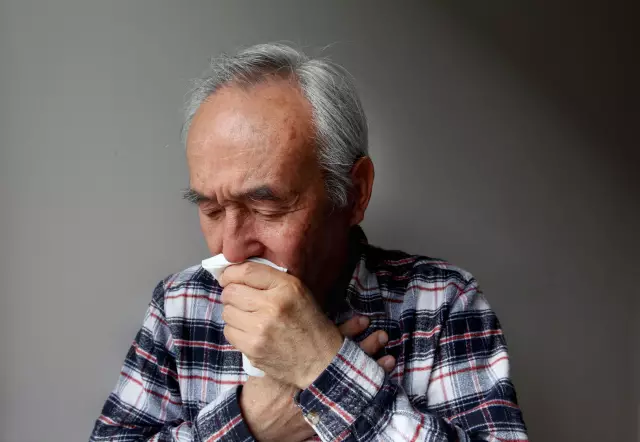- Author Rachel Wainwright [email protected].
- Public 2023-12-15 07:39.
- Last modified 2025-11-02 20:14.
Parkinsonism
General characteristics of the disease

Parkinsonism is a neurological syndrome, the main symptom of which is impaired voluntary movement. Parkinson's syndrome occurs in a number of neurological diseases and is always accompanied by tremors of the limbs, muscle stiffness, and slow motion of varying severity.
Depending on the etiology of the disease, there are primary or idiopathic parkinsonism and a secondary or symptomatic form of parkinsonism syndrome. In the first case, the disease is caused by the gradual death of dopamine neurons in the human central nervous system. They are responsible for the inhibition of motor activity, and their deficiency leads to a disorder of the motor function of the body.
Secondary parkinsonism syndrome is provoked by external factors: drugs, traumatic brain injury, infections, etc.
Parkinson's disease is one of the most common diseases in the elderly. It was described for the first time in 1817 and named after J. Parkinson. After 80 years, Parkinson's syndrome is diagnosed in about every 5th inhabitant of the planet. The increase in the life expectancy of people in developed countries leads to a further statistical increase in the number of patients with parkinsonism.
Parkinson's symptoms
Tremor, also known as involuntary trembling of the limbs, is one of the most striking symptoms of parkinsonism. During voluntary movement, the tremor disappears and appears again with the patient's motor passivity.
Another important symptom of parkinsonism is stiffness, or muscle stiffness. The disease is manifested by increased muscle tone of the skeletal muscles. Because of it, the implementation of any movement requires additional effort. Muscle stiffness is accompanied by a stoop. There is even an unofficial name for the pose of a patient with Parkinson's syndrome - "petitioner pose", caused by changes in reflexes responsible for the vertical position of the body.
Additional symptoms of parkinsonism are oligo - and bradykinesia (slowness and deficit of movements), depletion of gestures and facial expressions, imbalance.
Primary parkinsonism in the elderly can lead to impaired salivation, swallowing, monotony of the voice, and in rare cases, dementia (dementia). The last named symptoms of parkinsonism usually manifest themselves at a late stage of the disease.
The entire symptom complex of the disease leads to difficulties in performing everyday activities, causes significant inconvenience and disappears only during the patient's sleep.
Types of parkinsonism
According to the generally accepted classification of the disease, vascular parkinsonism is distinguished, as well as toxic, medicinal, post-traumatic and post-encephalitic types of the disease.
Vascular parkinsonism is provoked by vascular pathologies. Unlike other types of the disease, with it, the patient does not have periods of absence of tremor. Involuntary muscle tremors in vascular parkinsonism provoke subacute or acute cerebrovascular accidents. If the condition worsens, the disease can develop into a stroke.
Vascular parkinsonism is one of the rarest forms of the disease. Toxic and medicinal types of disease are much more common.
Toxic parkinsonism occurs against the background of chronic or acute poisoning with heavy metals, poisonous gases or drugs.
Medicinal parkinsonism provokes the use of medications, for example, antipsychotics.
Post-traumatic parkinsonism is caused by damage to brain structures and is most common in boxers. One of the subspecies of parkinsonism is Martland's syndrome, which is characterized by dystrophic changes in the brain.
Potencephalitic parkinsonism has an infectious etiology. It develops due to damage to the upper brain stem during epidemic encephalitis. One of the symptoms of this type of parkinsonism is oculomotor disorders: involuntary rolling of the eyes, etc.
Parkinsonism diagnosis
Tremor and other disorders of motor activity are already manifested with the death of a significant number of motor neurons. At this stage of the disease, the diagnosis is no longer difficult. Although not one of the symptoms of parkinsonism is not a pathognomonic sign, typical exclusively for this disease. Therefore, the final diagnosis is established only after long-term observation of the patient and improvement of his condition under the influence of anticholinergics.
Earlier diagnosis of parkinsonism is based on fixing minimal changes in the patient's voice caused by dysfunctions of the muscles of the larynx.
Parkinsonism treatment

The treatment regimen for parkinsonism is strictly individual for each patient. To stop the drug-type syndrome, it is usually sufficient to cancel the course of the medications taken. Treatment of vascular-type parkinsonism involves surgical correction of cerebral circulation by bypass surgery.
Part of the mandatory drug treatment for parkinsonism of any kind is the appointment of L-DOPA drugs, anticholinergics, etc. Drug treatment for parkinsonism only helps to reduce the manifestation of the symptoms of the disease and slow its progression.
Therapy for parkinsonism is lifelong, therefore, side effects may develop: constipation, dry mouth, general weakness, heart rhythm disturbances, memory disorders, etc. If the effectiveness of conservative treatment for parkinsonism is insufficient, brain neurostimulation is used. For this, a neurostimulator is implanted under the patient's skin in the chest area, which is connected with electrodes to the brain.
Radical methods of treating severe parkinsonism also include electroconvulsive therapy, deep brain stimulation with a magnetic field, and transplantation of stem cells and embryonic tissues to the patient.
YouTube video related to the article:
The information is generalized and provided for informational purposes only. At the first sign of illness, see your doctor. Self-medication is hazardous to health!






